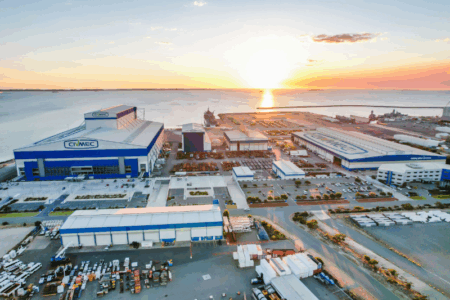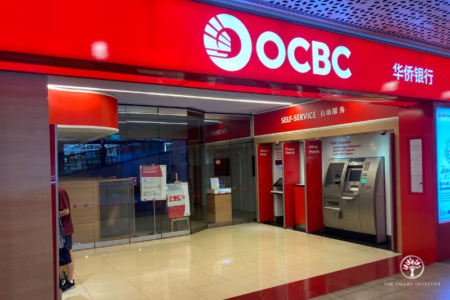The Singapore Exchange (SGX: S68) recently welcomed some new additions.
In November, both the CSOP iEdge S-REIT Leaders Index ETF (SGX: SRT) and UOB APAC Green REIT ETF (SGX: GRN) began trading on the local bourse, bumping up the number of REIT ETFs to five.
Each of the ETFs tracks a different underlying index, and hence pursues different investment strategies.
For instance, the Phillip SGX APAC Dividend Leaders REIT ETF (SGX: BYI) looks for REITs with the highest dividend yields around Asia, excluding Japan.
Meanwhile, the NikkoAM-StraitsTrading Asia Ex Japan REIT ETF (SGX: CFA) looks to represent general trends in the real estate sector, in both developed and emerging markets of Asia.
If you’re looking for a more local flavour, the Lion-Phillip S-REIT ETF (SGX: CLR) and CSOP iEdge S-REIT Leaders Index ETF contain high-quality S-REITs.
Lastly, the UOB APAC Green REIT ETF selects REITs from around Asia based on yields and environmental attributes.
Real estate is a popular asset class for many investors, and REIT ETFs offer an easy way to instantly diversify your real estate investment portfolio.
To help you make the choice on which REIT ETF to buy, here are four metrics you can use to compare them.
Geographic diversification
| REIT ETF | 1st | 2nd | 3rd |
| Phillip SGX APAC Dividend Leaders | Australia (52%) | Singapore (34%) | Hong Kong (11%) |
| Lion-Phillip S-REIT | Singapore (100.0%) | N.A. | N.A. |
| NikkoAM-StraitsTrading Asia Ex Japan | Singapore (46%) | Global/Asia (23%) | Hong Kong (17%) |
| CSOP iEdge S-REIT Leaders | Singapore(100%) | N.A. | N.A. |
| UOB APAC Green REIT | Japan (40%) | Australia (36%) | Singapore (16%) |
Geographic diversification can be a key consideration for many investors, especially those who prefer to spread their eggs across many different baskets.
By geography, the REIT ETFs do offer an array of options.
Two of them look for the best REITs around Asia ex-Japan, while two are solely invested in Singapore REITs.
The last candidate, UOB APAC Green REIT, has a 40% weightage allocated to Japan.
With Singapore being known as a REITs hub, it’s no surprise to see the country featuring prominently within the ETFs.
Many Singapore REITs also own and manage properties overseas.
However, picking a REIT ETF with exposures to different countries can help to avoid country-specific risks, and thus give investors greater peace of mind.
Sector allocation
| REIT ETF | 1st | 2nd | 3rd |
| Phillip SGX APAC Dividend Leaders | Diversified (42%) | Retail (28%) | Industrial (13%) |
| Lion-Phillip S-REIT | Industrial (36%) | Retail (33%) | Specialised (10%) |
| NikkoAM-StraitsTrading Asia Ex Japan | Retail (37%) | Industrial (30%) | Office (13%) |
| CSOP iEdge S-REIT Leaders | Industrial (43%) | Office (20%) | Retail (18%) |
| UOB APAC Green REIT | Diversified (30%) | Retail (29%) | Office (28%) |
Real estate can generally be classified into five broad categories – retail, commercial, industrial, hospitality and healthcare.
Depending on your preferences, this might affect your choice of ETF.
For example, pure industrial REITs form between 30% to 43% of the ETFs, except the Phillip SGX APAC Dividend Leaders, which only has a 13% exposure to the segment, and the UOB APAC Green REIT ETF, which has a 9% exposure.
The lasting effects of the COVID-19 pandemic may also have an impact on your decision.
Retail and office REITs may be permanently affected by trends such as work-from-home and the adoption of e-commerce, while industrial REITs could benefit from digitalization and burgeoning demand for strategically-located warehouses.
Performance
| REIT ETF | Annualised Return(Since Inception) | Dividend Yield |
| Phillip SGX APAC Dividend Leaders | 5.1% | 4.3% |
| Lion-Phillip S-REIT | 6.6% | 4.4% |
| NikkoAM-StraitsTrading Asia Ex Japan | 6.6% | 4.2% |
| REIT ETF | Benchmark 5-Years Return | Dividend Yield |
| CSOP iEdge S-REIT Leaders | 9.1% | 4.3% |
| UOB APAC Green REIT | 6.0% | 4.3% |
When it comes to historical performance, the CSOP iEdge S-REIT Leaders has the clear edge, with its underlying benchmark delivering an annualised return of 9.1% in the last five years.
This strong performance comes as no surprise.
The ETF has a large exposure to industrial REITs such as Mapletree Logistics Trust (SGX: M44U) and Ascendas REIT (SGX: A17U), which have shown resilience throughout the pandemic.
Industrial REITs also continue to be boosted by growing demand for data centres and logistics facilities.
As for dividend yield, all the REIT ETFs offer a fairly similar trailing 12-month return of between 4.2% and 4.4%.
Expense Ratio
| REIT ETF | Expense Ratio | Expense Cap |
| Phillip SGX APAC Dividend Leaders | 1.16% | N.A. |
| Lion-Phillip S-REIT | 0.6% | N.A. |
| NikkoAM-StraitsTrading Asia Ex Japan | 0.6% | 0.6% |
| CSOP iEdge S-REIT Leaders | N.A. | 0.6% |
| UOB APAC Green REIT | N.A. | N.A. |
When it comes to investing in an ETF, the expense ratio is an important figure to watch out for.
The ratio represents the expenses incurred by the ETF as a ratio of its net asset value (NAV), including management fees.
A higher expense ratio can make a significant dent in your returns over time.
To illustrate, a 1% fee on a fund that returns 6% per annum will consume 21.7% of your returns over a 10-year period.
Hence, the Phillip SGX APAC Dividend Leaders REIT ETF’s expense ratio of 1.16% does look expensive compared to its peers.
Get Smart: Selecting the Best REIT ETF
With more REITs sprouting up around Asia, the real estate industry across the continent is as vibrant as ever.
Choosing a geographically-diversified REIT ETF such as the NikkoAM-StraitsTrading Asia Ex Japan or the UOB APAC Green is a convenient way to participate in Asia’s growth story.
Speaking of growth, industrial REITs have performed well amidst the pandemic.
Looking to 2022 and beyond, the tailwinds surrounding industrial REITs look set to propel them to greater heights, which could benefit the CSOP iEdge S-REIT Leaders, which has the largest weightage of industrial REITS among all the options.
The ETF’s underlying index has also delivered an eye-catching annual return of 9.1% for the past five years, outstripping the alternatives.
With an expense ratio cap of just 0.6%, this ETF also promises to help investors maximise the return on their invested capital.
If you’re nervous, confused, or worried about buying your first stock, then our latest beginner’s guide to investing can help. It’s easy to read yet packed with valuable insights. Download it for free today, and buy your first stock in the next few hours. Click here to get started.
Follow us on Facebook and Telegram for the latest investing news and analyses!
Disclosure: Herman Ng owns shares of Ascendas REIT.





